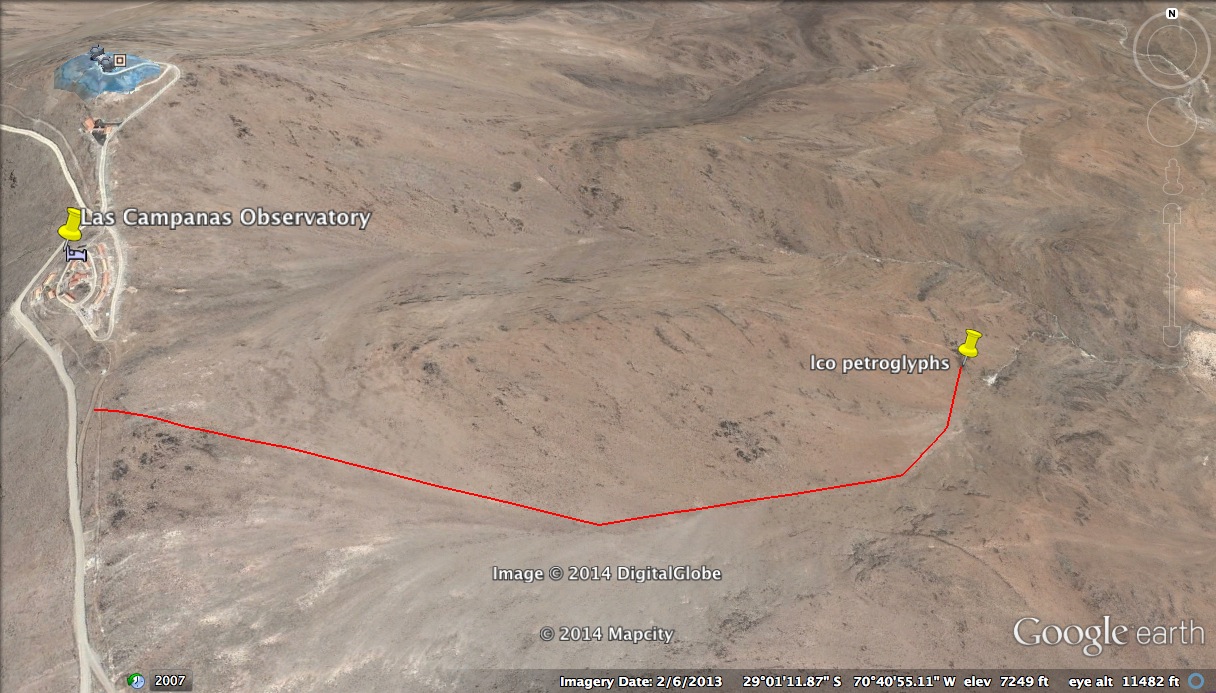The petroglyphs are chiseled mostly on the
east-facing sides of numerous boulders blackened by desert varnish.
There are probably on the order of a hundred boulders with engravings, apparently dating
from at least two different epochs. The older, paler petroglyphs (already weathered and recoated with a mineral
layer) mostly show geometric symbols, snakes, lizards, sun disks. There is a fresher
looking set of engravings, sometimes on top of the older ones, that often show Guanaco-like animals and human figures.
The petroglyphs are apparently similar to those near La Silla Observatory, belonging
to the El Molle culture (700 A.D. ?).
The boulders are to be found above several building foundations (or corrals ?) with primitive stone walls, adjacent to a mostly dry waterfall. The waterfall (in September 2014) was reduced to a pool of dirty, standing water. From afar, the calcinated, white rocks create the illusion that there is water gushing down the waterfall (which may be true for a short period during the rainy season). For a selection of photos of the petroglyphs, see the following link:
Las Campanas Petroglyphs, September '14
How to get there:

The whole trip shown by the line is about 1.7 km one way. Elevation gain
(or loss) amounts to about 400m (1200 feet). It is steeper than it looks on the google earth image, and the way back can be unpleasant, especially when it is hot and dry, so plenty of water and some sun protection will come handy. The petroglyphs are best
lit early in the morning.
The return is easiest if you crawl up in the bed of the creek, or just to the right of it.